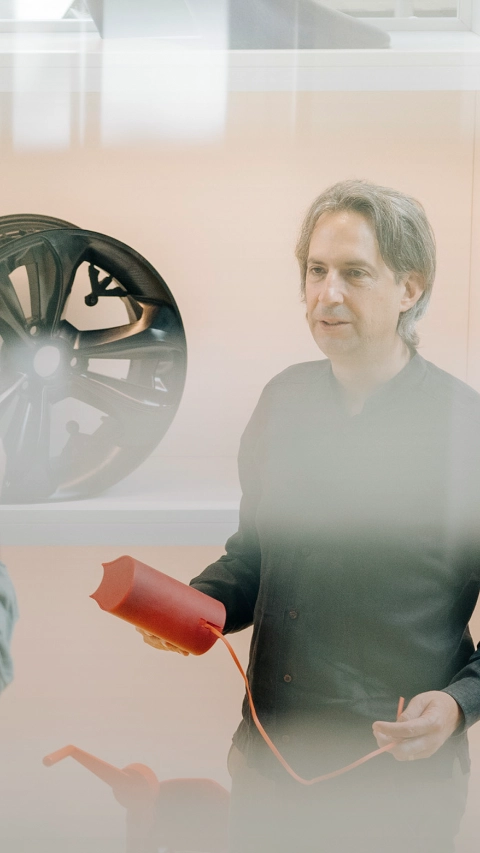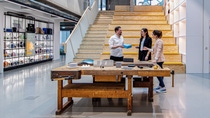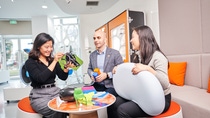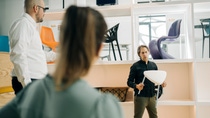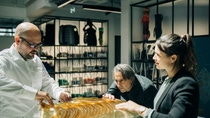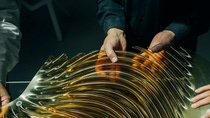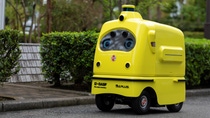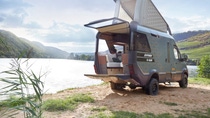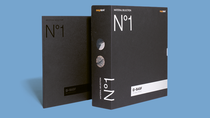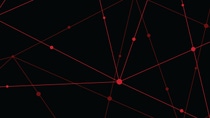Magazine
A space to stretch the imagination
The BASF Creation Centers foster innovation, creativity and collaboration between BASF and the company’s customers and partners.
Approaching the gates of the enormous industrial complex in Ludwigshafen, Germany, an unlikely architectural ensemble catches the visitor’s eye. Just outside the BASF plant, a gray bunker, relic of the past, serves as the foundation for the Creation Center at the company’s headquarters. Built on top, the Creation Center is encapsulated in a white organic lacework structure resembling a foam in close-up. Slightly rotated around its vertical axis, the Creation Center turns in a welcoming gesture towards the visitor, forming a contrast to the rigid symmetry of the square concrete structure beneath. As we come closer, the scars cut by shrapnel during the Second World War become visible and remind us of the structure’s original purpose. Today, in stark contrast, an external elevator lifts us upwards along the pocked concrete to the top of the building, where we cross a small bridge into a creative sanctuary.

BASF’s Creation Center in Ludwigshafen
Creation Centers in key markets

The Creation Centers are located in strategically important markets. Ludwigshafen (1) in Germany and Shanghai (2) in China are key locations for BASF performance materials. Japan’s affinity for design and its consumer and car industries make Yokohama (3) an important location. Mumbai (4) in India represents one of the most relevant emerging markets, with high customer demand for creative services.

Alexandre Dreyer talks to customers at the Creation Center in Shanghai, China.
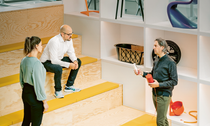
The central area at the Creation Center in Ludwigshafen, Germany, is a meeting point amid hundreds of samples, prototypes and products.
Pushing the potential of performance materials
The Creation Center in Ludwigshafen is one of four established by BASF at the company’s sites around the world to inspire and drive performance material innovation. The others are in Shanghai, China; Mumbai, India; and Yokohama, Japan. “Our passion and purpose are to inspire our customers, utilize our portfolio of performance materials and tap into their huge innovative potential,” says Alexandre Dreyer, Head of BASF’s Creation Center Asia Pacific.
Performance materials are the plastics that give products their specific qualities. They make surfaces attractive to the eye and touch, chairs comfortable and secure, they lend protective characteristics to work gear, durability and precision to machine parts, absorb vibrations or give back kinetic energy. With a decisive influence on the relationships we form with the objects around us, our purchasing decisions and whether we keep things or discard them prematurely, they have a considerable impact on the success of products in the marketplace – many of which owe them their very existence. “The possibilities for innovation are endless,” says Dreyer.
Inside the Creation Center in Ludwigshafen the creative spirit is tangible. The interior is carefully designed with BASF materials chosen wherever possible. Andreas Mägerlein, Group Leader, Creation Center Europe, guides us enthusiastically through the airy spaces. In the central area, simple steps form an auditorium with room for a small audience. In front of it, a worn wooden workbench is placed center stage. Along the surrounding walls, shelves are filled with objects, prototypes and boxes containing smaller samples and components that do not immediately reveal their purpose or application. There are iconic objects and products, too – bicycle saddles, chairs, car hoods, a firefighter’s helmet, and the adidas BoostTM running shoe, which features a sole made of BASF’s super elastic Infinergy® polyurethane foam.

Andreas Mägerlein in the Creation Center Ludwigshafen, Germany
A space where objects reign
Out of their everyday context, we look at the objects differently – more carefully and sometimes in awe at their beauty. Materials are the heroes here, but the objects into which they are molded are not put on pedestals or behind glass. The overflowing boxes encourage visitors to browse and touch; to bend, scratch and enjoy colors; to fully experience, explore and appreciate their versatile properties. In adjacent rooms, workspaces can be seen through doors and windows, as can 3D printers and an open kitchen area. This is a high-tech treasure trove, a laboratory, a meeting-point and a workshop all in one.
“People love to come here,” observes Mägerlein. “For us, it is a wonderful experience to provide our customers and partners with the space and freedom to develop great ideas. The environment we work in has a profound influence on how we feel and think.”
This is a place for inspiration and free thinking, unrestricted by hierarchies, job descriptions and work routines. Customers from all industry sectors and BASF employees meet here, bringing ideas and experiences from their different backgrounds. There are scientists, engineers, computer specialists, managers and marketers. “As designers we facilitate innovation. We have technical expertise but more importantly, we experiment – we are open to new ways of thinking,” says Mägerlein, who describes himself as a hybrid of engineer and designer. “We think about possibilities and opportunities. We use different creative techniques, sometimes highly structured, sometimes very free, depending on the nature of the project. We don’t want to be too prescriptive.”
Connecting the physical and the digital
From the adjoining meeting rooms, visitors can look down on the vast Ludwigshafen site. The view forms a strong connection between the Creation Center and BASF’s chemical complex. Mägerlein, handling a joystick controller, puts on a headset with antenna on both sides. Equipped with receiver headsets, it takes a few seconds before our vision adapts and an impressively realistic three-dimensional representation of the Hymer VisonVenture campervan appears before our eyes. He turns his hand and the van rotates. We zoom in close and explore.
Digital tools play an increasingly important role in the development process. Visualization techniques have enhanced prototyping and ensure the viability of the product development. In addition, a continuously updated database provides information on performance materials and products in the portfolio.
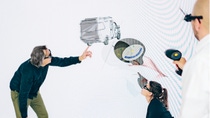
Mägerlein and colleagues zoom in on a detail of the 3D representation of the Hymer VisonVenture campervan.
All materials found in the Creation Centers can be scanned to gain access to the database and explore graphs, videos, 3D models, animations, applications, markets and final products. In conjunction with the immediate physical experience, this provides a comprehensive picture in a very accessible format. For customers who are unable to visit the Centers in person, remote workshops can be aided by these digital tools.
From initial ideation or brainstorming to conceptual design, the investigation of practical and formal solutions, the definition of technical specifications, the creation of computer simulations, research and development, preproduction before a product enters the manufacturing process there are layers of complexity that must be explored and understood. “We try to engage in the process as early as possible,” says Dreyer. “Often customers have a very vague idea of what they want to achieve. This is where we come in. We have the knowledge and experience to accompany our customers from the initial stages through the entire development cycle until the product is market-ready.”
Societal trends drive design
Both Mägerlein and Dreyer stress the importance of working pragmatically but with purpose in mind. Yet, looking beyond current projects is equally important. Trend scouting is an additional area where the Creation Center teams add value. But that does not mean simply looking at which materials are currently trending. “We turn the question around,” says Mägerlein. “We think about how societal trends may trigger new developments in the creation and application of materials.”
Consider sustainability. Consumers are increasingly aware of the environmental impact of products, and this influences purchasing decisions. Naturally, this is reflected in the development of materials and products. How the materials used in consumer goods can be redirected into the circular economy is an important focus – and in line with BASF’s commitment to sustainability.
Projects of the BASF Creation Centers
“We help our customers understand which trends are driving consumer behavior, and we feed this knowledge into our organization,” says Mägerlein. Exploring BASF’s Creation Centers provides a deep insight into the potential that can be delivered by design expertise and creativity paired with BASF’s material portfolio and manufacturing expertise. But even then, we have only scratched the surface of what is possible.
“Designers used to be the styling guys. This is a long-gone notion. Today, the value we deliver in working creatively with customers and our experts from different disciplines is evident,” says Mägerlein. “The Creation Centers are living proof.”
